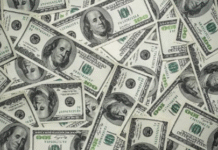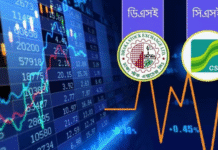Bangladesh’s exports in the first 11 months of the current fiscal year stood at $31.79 billion, 4.68 percent lower than the target of $37 billion, Export Promotion Bureau (EPB) data show.
However, compared to that of the same period in the last fiscal year, this year’s export posted 3.67 percent growth, second lowest in a decade.
Prolonged political turmoil in 2013-15 and the collapse of the Rana Plaza building in 2013 pushed the country’s export growth down to 3.4 percent in 2014-15, exporters say.
Apparels that account for Bangladesh’s over 80 percent exports maintained an average 13 percent growth over the last 10 years.
As a result, export earnings this fiscal year were able to finance slightly over two-thirds of import payments and pushing the trade deficit up to $8.1 billion in the first 10 months of the fiscal year, Bangladesh Bank data show.
Four major factors affected the country’s export growth this year, said Avijit Chowdhury, acting chief executive of the EPB.
They are Brexit and its impacts on exchange rate; political changes and the ongoing recession in the US; price fall of petroleum products in the Middle Eastern countries; and appreciation of Bangladesh currency against the greenback.
In addition, exporters pointed out two other reasons — declining consumption of apparel items in the wake of rising spending for electronic gadgets and unhealthy price competition practised by both buyers and local manufacturers — for the fall in export growth.
Garment exports to the US, Bangladesh’s single largest export destination, fell by 6.8 percent in July-April period while to the UK, the third largest market, fell by 5.91 percent due to Brexit.
Apparel exporters said a silent recession was going on in their main export destinations in Europe in the run up to the general elections in four major economies this year.
France and the Netherlands have already had their elections while the UK goes to polls today and Germany on September 24. During this period, retailers and consumers wait for the new government’s policy decisions, exporters said.
Exports also declined for the imposition of a ban on direct cargo flight from Bangladesh to the UK and Germany last year, Avijit said.
Bangladeshi taka appreciated nearly by 8 percent against US dollar for which exporters are getting less against exports, he said. “We might not achieve the target this fiscal year, but maybe we will be close.”
Garment shipment, which contributes over 82 percent to the national export, declined further during July-May period and grew only by 2.16 percent to $25.62 billion.
In July-May period, export of knitwear rose 4.91 percent to $12.50 billion and woven export growth declined by 0.33 percent year-on-year to $13.11 billion.
The declining trend in apparel export has broken the last 10 years’ growth record, said Mahmud Hasan Khan Babu, vice-president of Bangladesh Garment Manufacturers and Exporters Association (BGMEA).
Babu said although garment export volume rose by nearly 9 percent in July-May period, the earning did not. “That means prices of Bangladeshi apparel items declined further worldwide,” Babu said.
Moreover, consumption of apparel items declined nearly 7 percent in 2016 and nearly 8 percent in 2015 as western consumers are more interested to spend money for electronic gadgets rather than apparel items, he said.
Babu also blamed the unhealthy price competition by both buyers and local manufacturers. “If such a down trend of prices continues, export growth will fall further in near future.”
He said many small and medium factories had been shut down over the last few years as they failed to comply with the inspections by the Accord and Alliance.
Apart from apparels, frozen and live fish export declined by 1.89 percent to $472.85 million and terry towel by 8.6 percent to $40.41 million.
Source: The Daily Star









